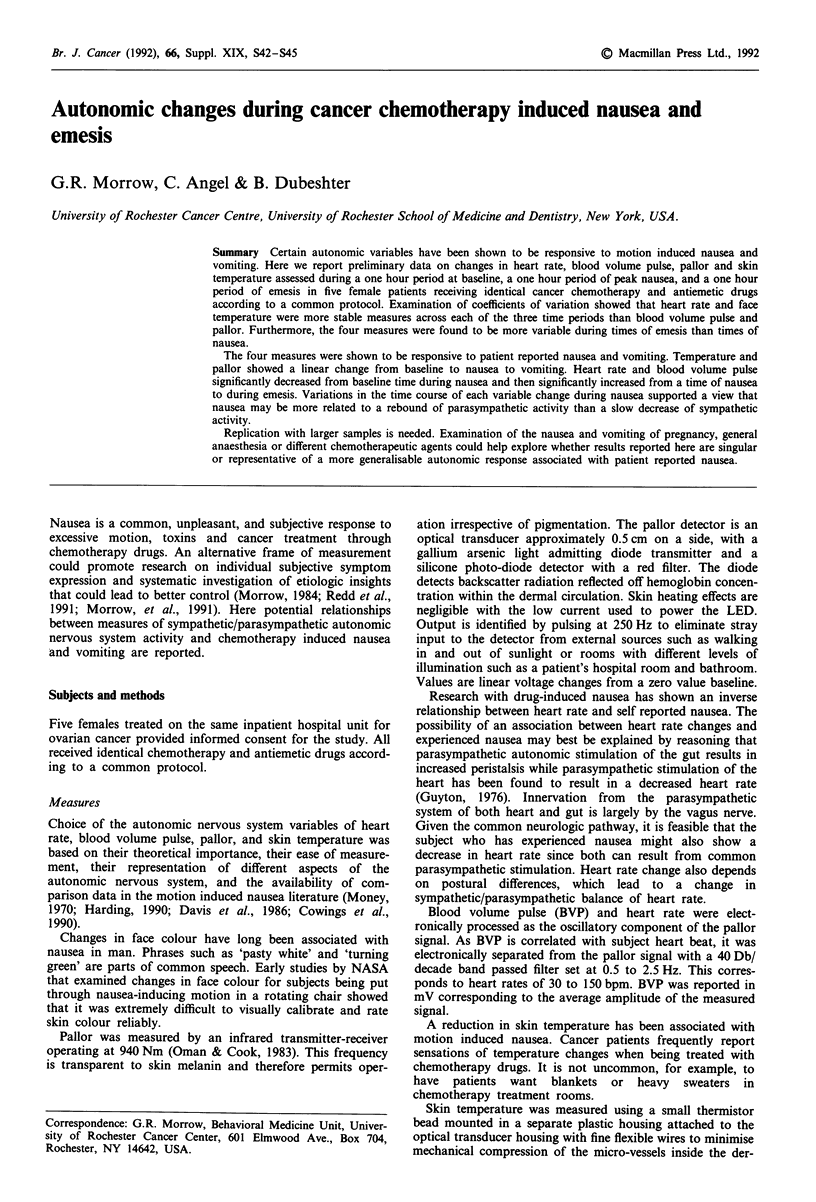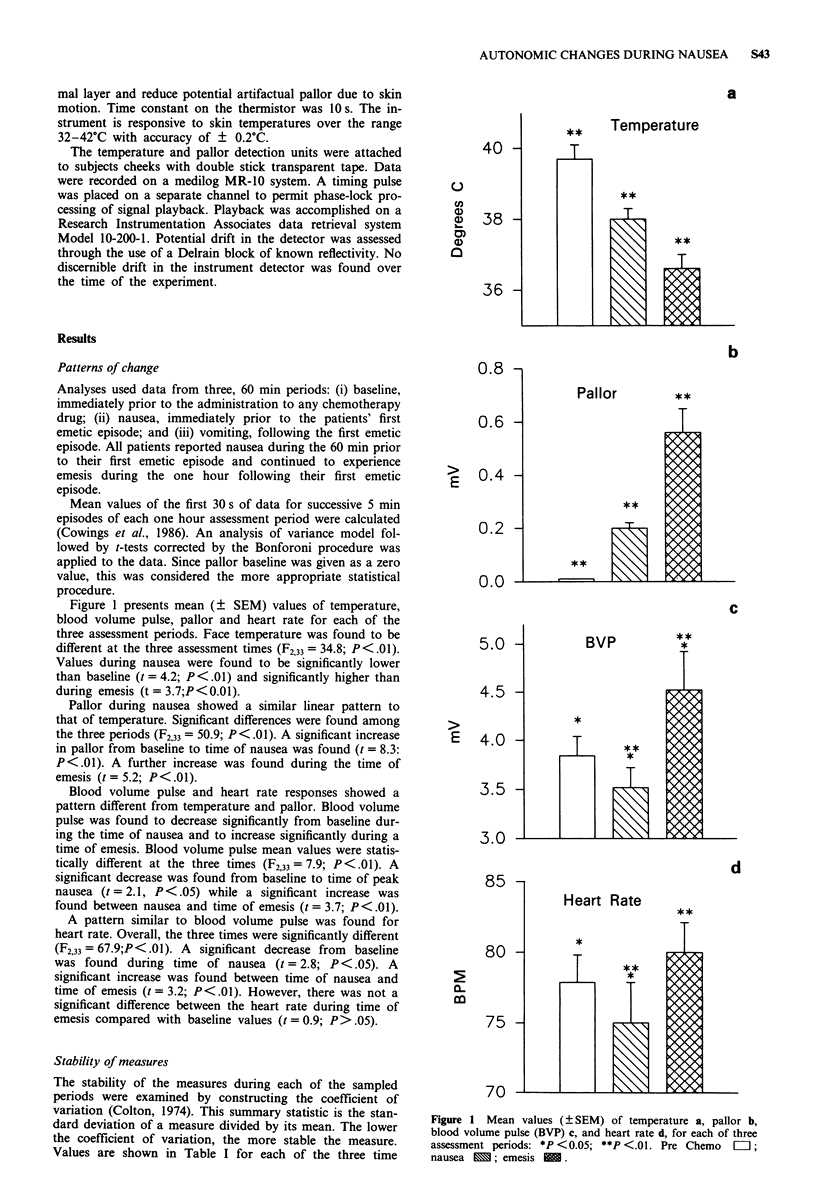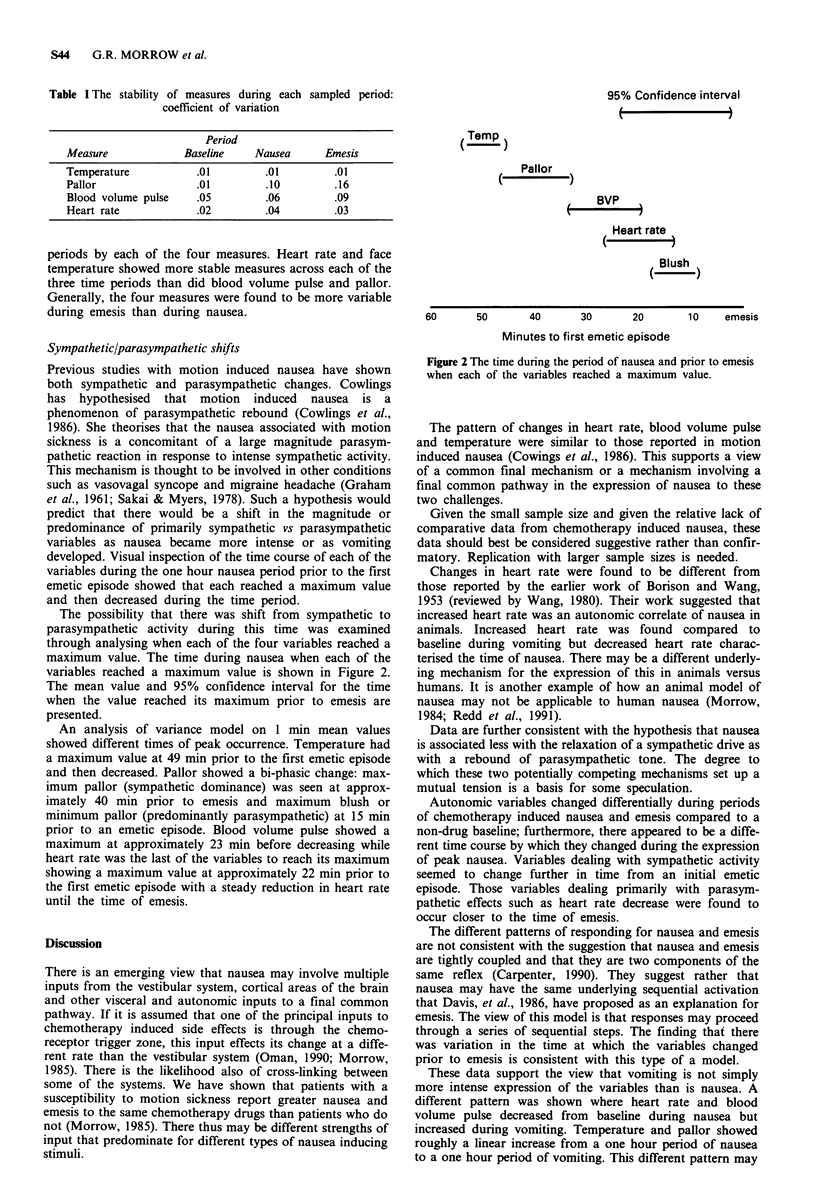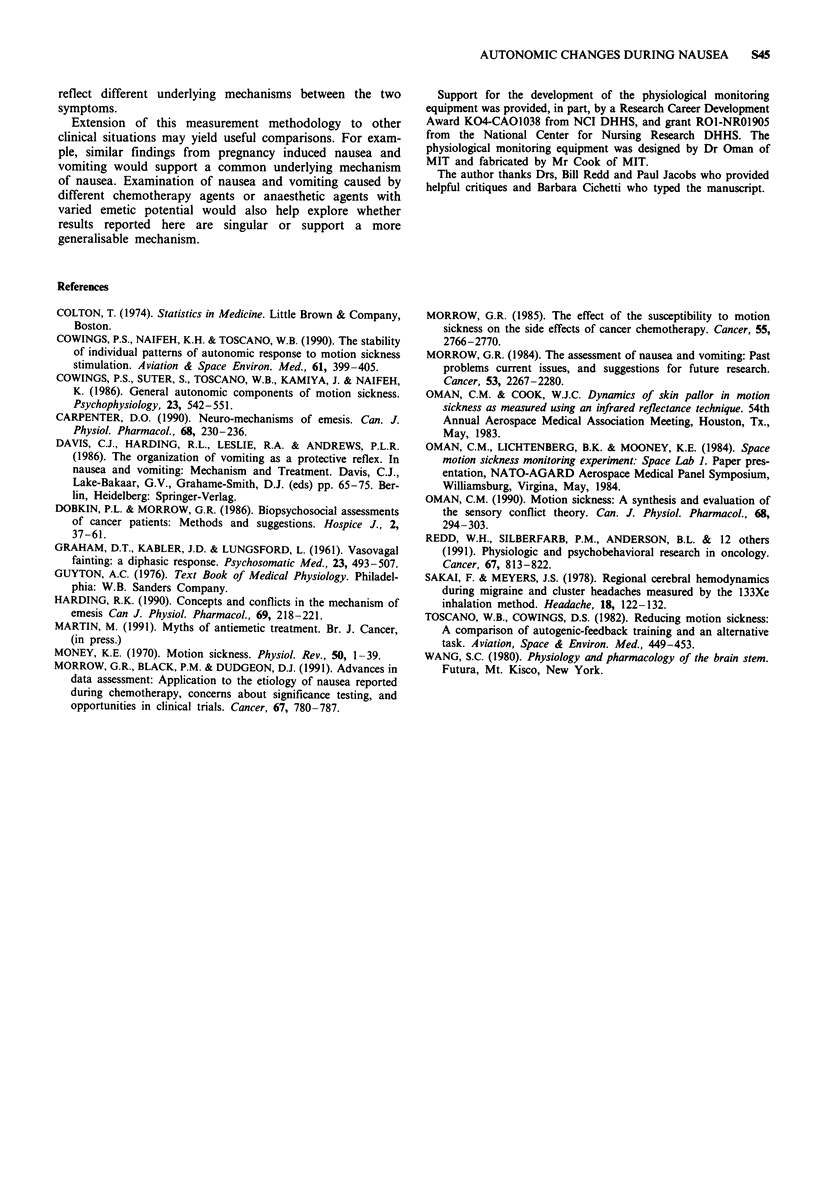Abstract
Certain autonomic variables have been shown to be responsive to motion induced nausea and vomiting. Here we report preliminary data on changes in heart rate, blood volume pulse, pallor and skin temperature assessed during a one hour period at baseline, a one hour period of peak nausea, and a one hour period of emesis in five female patients receiving identical cancer chemotherapy and antiemetic drugs according to a common protocol. Examination of coefficients of variation showed that heart rate and face temperature were more stable measures across each of the three time periods than blood volume pulse and pallor. Furthermore, the four measures were found to be more variable during times of emesis than times of nausea. The four measures were shown to be responsive to patient reported nausea and vomiting. Temperature and pallor showed a linear change from baseline to nausea to vomiting. Heart rate and blood volume pulse significantly decreased from baseline time during nausea and then significantly increased from a time of nausea to during emesis. Variations in the time course of each variable change during nausea supported a view that nausea may be more related to a rebound of parasympathetic activity than a slow decrease of sympathetic activity. Replication with larger samples is needed. Examination of the nausea and vomiting of pregnancy, general anaesthesia or different chemotherapeutic agents could help explore whether results reported here are singular or representative of a more generalisable autonomic response associated with patient reported nausea.
Full text
PDF



Selected References
These references are in PubMed. This may not be the complete list of references from this article.
- Carpenter D. O. Neural mechanisms of emesis. Can J Physiol Pharmacol. 1990 Feb;68(2):230–236. doi: 10.1139/y90-036. [DOI] [PubMed] [Google Scholar]
- Cowings P. S., Naifeh K. H., Toscano W. B. The stability of individual patterns of autonomic responses to motion sickness stimulation. Aviat Space Environ Med. 1990 May;61(5):399–405. [PubMed] [Google Scholar]
- Cowings P. S., Suter S., Toscano W. B., Kamiya J., Naifeh K. General autonomic components of motion sickness. Psychophysiology. 1986 Sep;23(5):542–551. doi: 10.1111/j.1469-8986.1986.tb00671.x. [DOI] [PubMed] [Google Scholar]
- Dobkin P. L., Morrow G. R. Biopsychosocial assessment of cancer patients: methods and suggestions. Hosp J. 1986;2(3):37–59. [PubMed] [Google Scholar]
- GRAHAM D. T., KABLER J. D., LUNSFORD L., Jr Vasovagal fainting: a diphasic response. Psychosom Med. 1961 Nov-Dec;23:493–507. doi: 10.1097/00006842-196111000-00004. [DOI] [PubMed] [Google Scholar]
- Money K. E. Motion sickness. Physiol Rev. 1970 Jan;50(1):1–39. doi: 10.1152/physrev.1970.50.1.1. [DOI] [PubMed] [Google Scholar]
- Morrow G. R., Black P. M., Dudgeon D. J. Advances in data assessment. Application to the etiology of nausea reported during chemotherapy, concerns about significance testing, and opportunities in clinical trials. Cancer. 1991 Feb 1;67(3 Suppl):780–787. doi: 10.1002/1097-0142(19910201)67:3+<780::aid-cncr2820671405>3.0.co;2-q. [DOI] [PubMed] [Google Scholar]
- Morrow G. R. Methodology in behavioral and psychosocial cancer research. The assessment of nausea and vomiting. Past problems, current issues and suggestions for future research. Cancer. 1984 May 15;53(10 Suppl):2267–2280. [PubMed] [Google Scholar]
- Morrow G. R. The effect of a susceptibility to motion sickness on the side effects of cancer chemotherapy. Cancer. 1985 Jun 15;55(12):2766–2770. doi: 10.1002/1097-0142(19850615)55:12<2766::aid-cncr2820551207>3.0.co;2-7. [DOI] [PubMed] [Google Scholar]
- Oman C. M. Motion sickness: a synthesis and evaluation of the sensory conflict theory. Can J Physiol Pharmacol. 1990 Feb;68(2):294–303. doi: 10.1139/y90-044. [DOI] [PubMed] [Google Scholar]
- Redd W. H., Silberfarb P. M., Andersen B. L., Andrykowski M. A., Bovbjerg D. H., Burish T. G., Carpenter P. J., Cleeland C., Dolgin M., Levy S. M. Physiologic and psychobehavioral research in oncology. Cancer. 1991 Feb 1;67(3 Suppl):813–822. doi: 10.1002/1097-0142(19910201)67:3+<813::aid-cncr2820671411>3.0.co;2-w. [DOI] [PubMed] [Google Scholar]
- Sakai F., Meyer J. S. Regional cerebral hemodynamics during migraine and cluster headaches measured by the 133Xe inhalation method. Headache. 1978 Jul;18(3):122–132. doi: 10.1111/j.1526-4610.1978.hed1803122.x. [DOI] [PubMed] [Google Scholar]
- Toscano W. B., Cowings P. S. Reducing motion sickness: a comparison of autogenic-feedback training and an alternative cognitive task. Aviat Space Environ Med. 1982 May;53(5):449–453. [PubMed] [Google Scholar]


